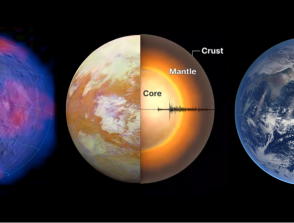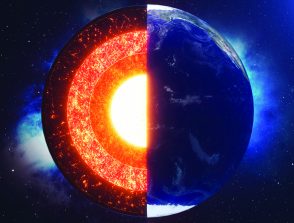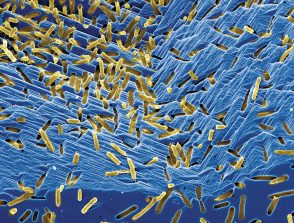ANR project : Analysis of Photometric Observations for the Study of Titan Climate

Au-dessus et sous l’atmosphère de Titan.
Start: 31/12/2016
Coordinators : Sébastien Rodriguez, Pascal Rannou
Host institutions :
GSMA
Partner institutions :
GSMA, LMD, LESIA, LPGN, IAS, IPAG
Related teams :
Planetology and Space Sciences
Related themes :
Earth and Planetary Interiors, Origins
The scope of this project is to understand Titan climate system with the use of a couple 3D General Circulation Model, and with a meteorological record of different observable fields from recent observations. Since the arrival of Cassini in 2004 and Huygens in 2005, our knowledge of this planetary body has greatly increased. A new world was discovered but, up to now, many aspects of Titan atmosphere have not been fully studied. Moreover, the complex mechanism of Titan climate is far from being understood. The works already published with Cassini photometric observations generally concerns the more spectacular aspects (clouds), and not with a full description. The surface features are essentially studied for their morphology, but the absolute surface reflectivity is not studied.
To understand the complex system of Titan, we need first to better characterize the physical properties of the atmosphere and the surface. The first part of this project is then to make an exhaustive analysis of the observations made by several instruments (VIMS, ISS, and CIRS) and to characterize the physical properties of the haze, of the condensates mist, of the clouds and of the surface. We plan to do a detailed analysis of photometric data taken by Cassini, in order to characterize quantitative aspects of the atmosphere. We will use a radiative transfer models to model the photometry and perform quantitative analysis. At the end of this phase, we expect to produce 3D maps of opacity and physical properties (size, spectral behavior, etc…) of the haze and mist layers, of the cloud cover, and their time evolution. We will also retrieve quantitative information about the surface, principally, constraints on the surface reflectivity and possibly on the composition. This part of the work is essentially a climatologic description of Titan. But, often, the links between the different components are hidden, and may only be interpreted with a model.
The second part, and the main scope of this project is to use of a 3-dimension Global Climate Model (the 3D IPSL-GCM) and to compare its predictions to the climatologic records elaborated in the first part. The model enables us to analyze and put diagnostics on any computed physical quantities, even non-observable, to understand links between different observable quantities. Thus, with this phase of the work, we will be able to understand and describe the complex interplay between the various components of Titan (wind, temperature, haze, clouds, surface and atmospheric methane, other condensate species and surface properties). We will also be able to implement the model with new processes if needed, and to produce new simulations, in order to improve the predictions.
At the end of the project, we plan to have a detailed 3D description of the mechanics of the atmosphere and of the couplings in Titan system (atmosphere+surface). For instance, strong feedback loops in the stratosphere (between dynamics, haze and radiative transfer) and in the troposphere (haze, clouds, gaseous species, liquids at surface and circulation) must be clarified. We expect to have solved essential questions as the source and sinks of the haze, of the methane and the other species, with the observed distributions in the atmosphere. We also plan to determine the nature of the surface, and its interaction with the atmosphere in term of various exchange (matter, heat and radiation) and influences (topography).
This work will give a new insight on Titan system which will allow to make comparisons with other planetary bodies as the Earth, Venus and Mars. For instance, Titan share with Mars and Earth to have marked seasonal cycles of aerosols and condensate species, vigorous exchanges between the atmosphere and surface reservoirs. Titan and Mars also have an elliptic orbit, with a strong orbit-season correlation (aphelion and perihelion close to solstices) giving a marked seasonal asymmetry between the southern and northern hemisphere. At last, Titan is interesting for the problem of the origin of the life in two aspects: first it harbors a chemistry which is much more complex that ever though before. Aerosols, which are produced by photochemistry, are a key element, among others, to understand this complexity. Secondly, the early Earth was probably protected from UV radiations by a haze layer similar to that of Titan. Then, Titan haze may give hints about what happens on Earth in the first stage of the emergence of the life.






